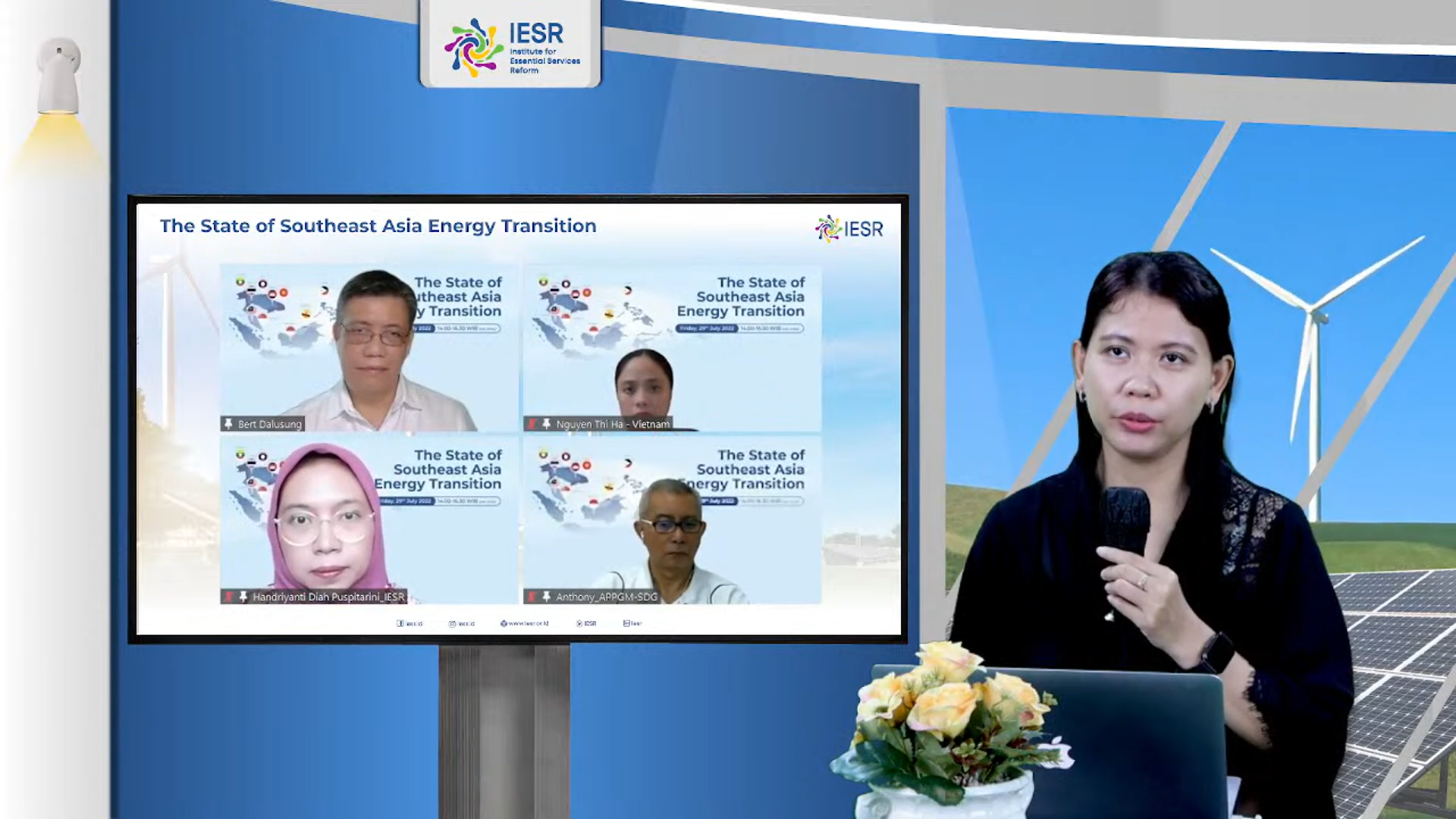Jakarta, 29 July 2022 – Southeast Asia is a strategic area with the second largest economic growth in Asia after China. Southeast Asia is predicted to continue to develop economically. Energy demand is also predicted to continue to rise. With the condition that fossil energy is still abundant in the Southeast Asian region, joint efforts between countries in Southeast Asia are needed to achieve decarbonization without compromising economic growth.
South Korea and China, which are investors in various fossil projects, especially coal-fired power plants in the Southeast Asia region, have committed to no longer finance PLTU projects abroad in 2021. This commitment is expected to be a signal that will lead to more massive renewable energy investment.
Dongjae Oh, program lead for climate finance, Solutions for Our Climate (SFOC) in a webinar entitled “The State of Southeast Asia Energy Transition” stated that South Korea’s commitment to no longer finance coal-fired power plants is indeed quite surprising but there are other things that should be wary of related South Korean investment preferences.
“Despite having withdrawn funding for coal-fired power plants, South Korea continues to invest in the oil and gas sector in Southeast Asia with a value of 10 times, namely $127 billion from coal investment of only $10 billion. Indonesia is the largest recipient of oil and gas investment from South Korea,” Dongjae explained.
Dongjae added that gas is considered by the Korean government as a clean alternative energy for the transition period.
China also announced that it would no longer finance overseas coal projects in September 2021. A number of Chinese foreign and domestic policies have changed since then. Isabella Suarez, a researcher at the Center for Research on Energy and Clean Air, explained that the Chinese government has begun to include a clause on the termination of coal financing in their law.
“A number of local Chinese banks are also starting to state that they will no longer finance coal projects,” Isabella added.
The withdrawal of South Korea and China in financing coal-fired power plants is expected to urge ASEAN countries to develop renewable energy more massively.
Meanwhile, the energy transition situation in several Southeast Asian countries still needs a lot of encouragement and incentives.
Handriyanti Diah Puspitarini, a senior researcher at the Institute for Essential Services Reform (IESR), said that the current state of the energy transition in Indonesia is quite slow and not enough to meet the climate mitigation target to limit global temperature rise to 1.5 degrees.
“If Indonesia doesn’t do something to accelerate the penetration of renewable energy, according to the IESR calculation in 2025 we will only reach 15% renewable energy in the energy mix and 23% in 2030,” explained Handriyanti.
Handriyanti emphasized the importance of the Indonesian government to seek funding models and have consistent political will in Indonesia’s energy transition process, considering that the transition process takes a long time and requires large amounts of funds.
Similar to the situation in Indonesia’s electricity sector, the Philippines is still dominated by fossil energy in its electricity sector. Albert Dalusung, energy transition advisor, Institute for Climate and Sustainable Cities (ICSC) said that the Philippine government is currently focusing on reducing the use of oil in the transportation sector and developing renewable energy.
“The president has stated that renewable energy is at the forefront of the climate agenda, the high price of fossil energy has also made the government change its energy policy,” explained Albert.
Indonesia’s neighboring country, Malaysia, has a target of 31% renewable energy by 2025 and achieves carbon neutral status by 2050. Antony Tan, executive officer (Sustainability & Finance), All Party Parliamentary Group Malaysia on Sustainable Development Goals (APPGM – SDG), stated that currently Malaysia is optimistic that it can achieve this target.
“However, there are things that need to be improved in energy policy in Malaysia, namely the need for a specific ministry of energy and a more holistic policy to design a more sustainable transportation system,” Antony explained.

